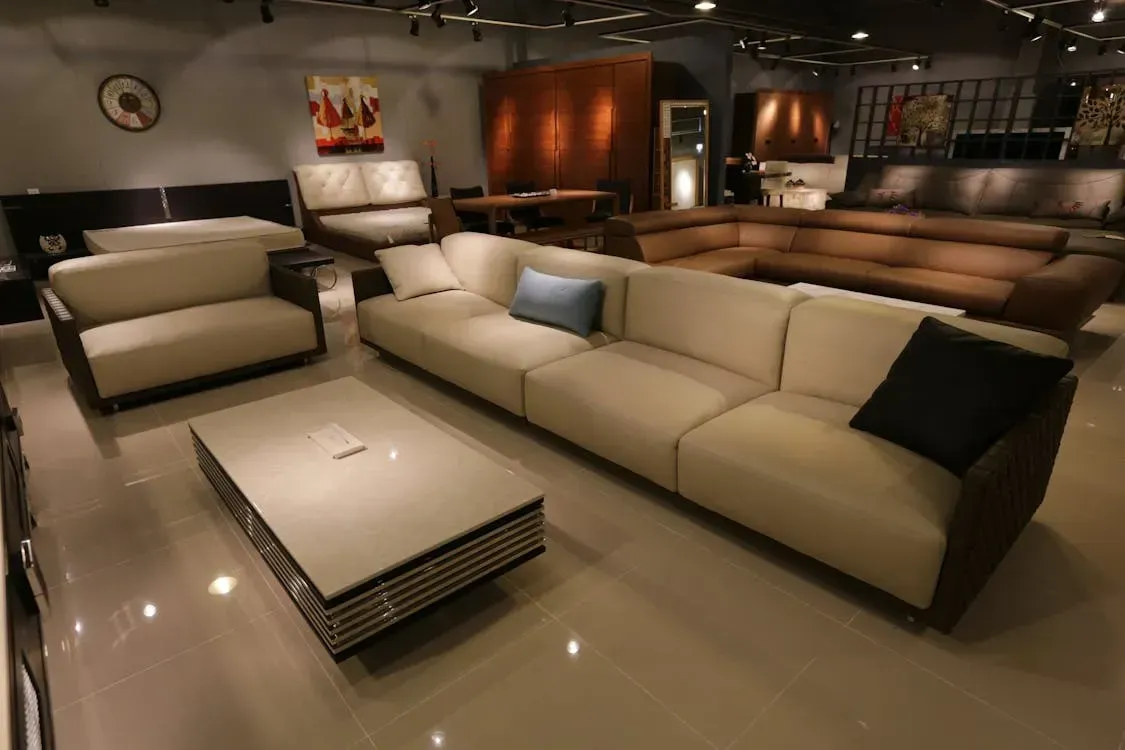Your Ultimate Guide to Home Automation: Answering All Your Questions

Managing your home’s systems can be a hassle.
From adjusting the thermostat to turning off the lights, these everyday tasks can be time-consuming and easy to forget.
Home automation offers a solution.
In this guide, we promise to answer all your questions about home automation.
You’ll learn how it works, the benefits it offers, and how to keep your system secure.
We’ll also cover installation tips, device compatibility, and advanced features to help you create the perfect smart home environment.
What is home automation?
Home automation uses technology to control and automate household systems like lighting, climate, entertainment, and security.
It integrates these systems to work together seamlessly, making life more convenient and efficient.
Imagine controlling your lights, thermostat, and security cameras all from your smartphone.
What does home automation involve?
Home automation involves integrating various devices and systems in your home.
These can include smart lights, thermostats, security cameras, and more.
These devices are connected to a central system that you can control via a smartphone app, voice commands, or a dedicated control panel.
Using home automation services in UT, you can make your home smarter and more efficient. Whether you're in Saint George or another part of Utah, home automation can enhance your daily life.
How does home automation work?
Home automation systems combine hardware and software to create a cohesive system that you can control remotely.
The hardware includes sensors, controllers, and actuators.
The software consists of apps and cloud services that enable remote control and automation.
What technologies power home automation?
Several technologies power home automation systems, including Wi-Fi, Zigbee, Z-Wave, and Bluetooth.
These technologies allow devices to communicate with each other and with you.
How do these components interact?
- Sensors: Detect changes in the environment, such as motion, temperature, or light levels. For example, a motion sensor can detect when someone enters a room and trigger the lights to turn on.
- Controllers: Act as the brain of the system. They receive input from sensors and send commands to actuators. Controllers can be standalone devices like hubs or integrated into other devices like smart speakers.
- Actuators: Perform actions based on the controller's commands. This can include turning on lights, adjusting thermostats, or locking doors. For instance, a smart thermostat installation in UT uses actuators to adjust your home's temperature.
What role does software play?
The software component of home automation involves apps and cloud services. These apps allow you to control and monitor your home devices from your smartphone or tablet. Cloud services enable more advanced features like remote access, scheduling, and integration with other smart devices.
For instance, a smart thermostat installation in UT uses Wi-Fi to connect to your phone, letting you adjust the temperature remotely. Similarly, voice-controlled home automation allows you to control devices using voice commands through platforms like Amazon Alexa or Google Assistant.
Is home automation secure?
Security in home automation can vary significantly. While the convenience and benefits are substantial, they come with potential risks. Here’s how to ensure your system remains secure:
What are the main security concerns?
- Unauthorized Access: Hackers could potentially gain access to your home network and control your devices.
- Data Privacy: Your personal data, including usage patterns and device information, could be exposed if not properly protected.
How can I enhance the security of my home automation system and ensure safety from hackers?
- Strong Passwords: Use strong, unique passwords for all your devices and accounts. Avoid common passwords and update them regularly.
- Secure Networks: Ensure your home Wi-Fi network is secure. Use WPA3 encryption and change the default network name (SSID) and password.
- Device Encryption: Choose devices that offer robust encryption standards to protect your data.
- Regular Updates: Keep all device firmware and software updated to protect against vulnerabilities.
- Two-Factor Authentication: Enable two-factor authentication (2FA) wherever possible. This adds an extra layer of security by requiring a second form of verification.
Professional Monitoring and Support
For enhanced security, consider services like remote security monitoring in Saint George. Professional monitoring services can provide real-time alerts and support, ensuring your home remains secure even when you're away.
By following these steps and choosing reputable products, you can significantly reduce the risks and enjoy the benefits of a secure home automation system.
How do I install a home automation system?
Installation ranges from simple DIY setups to professional installations.
Basic systems might only require setting up a hub and connecting devices.
Complex systems might need professional help for wiring and configuration.
For instance, home theater installation in Saint George might need a professional touch.
Can I install home automation devices myself?
Many devices are designed for easy DIY installation.
However, complex systems, especially those involving electrical work or major integrations, might require professional installation.
If you're unsure, consult with home automation consultants in UT for guidance.
What devices can be integrated into a home automation system?
Devices include smart lights, thermostats, locks, cameras, doorbells, speakers, and appliances.
Many systems support voice assistants like Amazon Alexa, Google Assistant, and Apple Siri. In Saint George, smart home systems often include audio visual equipment and home security systems.
Are home automation devices compatible with each other?
Compatibility depends on the protocols and platforms used by the devices.
Common protocols include Zigbee, Z-Wave, Wi-Fi, and Bluetooth. It's crucial to check compatibility with your existing system before purchasing new devices.
Consulting with home automation services in UT can help ensure all devices work seamlessly together.
How much does a home automation system cost?
Costs vary widely based on system complexity. Basic DIY systems can start at a few hundred dollars. Comprehensive, professionally installed systems can cost several thousand dollars. For instance, a custom home automation in Saint George will be more expensive than a simple DIY setup.
Can home automation save me money?
Yes, home automation can save money through energy efficiency.
Smart thermostats and lighting reduce energy consumption.
Some insurance companies offer discounts for homes with advanced security systems.
Smart lighting solutions in Utah and smart thermostat installation in UT are examples of investments that can lead to savings.
How do I control my home automation system?
Most systems are controlled via smartphone apps, voice commands, or dedicated control panels.
Apps allow you to manage and monitor devices remotely. Voice-controlled home automation in Saint George makes it easy to adjust settings without lifting a finger.
What maintenance is required for home automation systems?
Maintenance involves keeping software and firmware updated, replacing batteries in wireless devices, and ensuring all connections and sensors function properly.
Regular checks help maintain system efficiency and security.
Consulting with home automation consultants in UT can help ensure your system stays up-to-date.
What is geofencing in home automation?
Geofencing uses your smartphone’s location to trigger actions as you enter or leave a predefined area.
For example, your lights can turn on and your thermostat can adjust when you arrive home.
Can I integrate home automation with my existing security system?
Yes, many modern home automation systems are designed to integrate with existing security systems.
This allows you to control everything from a single interface. Upgrading to include security camera installation in Saint George can enhance your system further.
Conclusion
Home automation brings convenience, security, and energy efficiency to your fingertips.
By integrating various devices and systems, you can control your home environment with ease and confidence.
Whether you're looking to save on energy bills with smart thermostats, enhance security with cameras, or simply enjoy the convenience of voice-controlled lighting, home automation has something to offer.
Call to Action
Ready to transform your home with cutting-edge automation?
Contact Audiovation for expert advice and top-notch services in home automation, audio and video, lighting and shades, and camera installation.
Service Areas:
- Saint George
- Washington
- Hurricane
- Cedar City
- Colorado City
Whether you're looking for smart home systems in Saint George or home automation services in UT, Audiovation has you covered. Reach out today and let us help you create the perfect smart home environment.
Send us a Message
We will get back to you as soon as possible
Please try again later
CONTACT US
Phone: (435) 669-5066
Address: 614 E Red Sands Dr, Washington, UT 84780, United States of America



